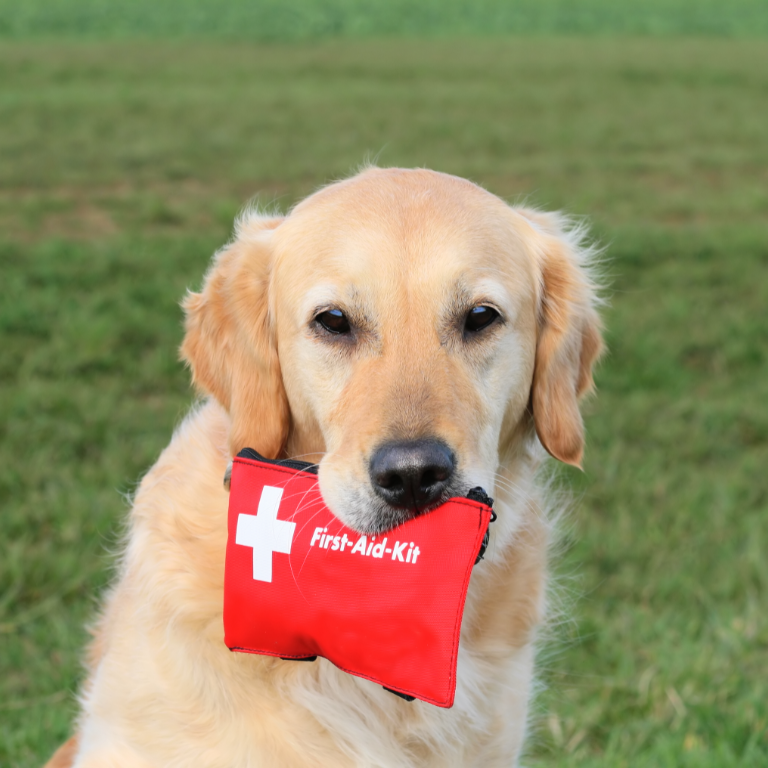An open wound or scab are often easier to deal with because they’re visible and your vet can determine the right solution.
However, internal bleeding can be difficult to treat.
Whether the internal bleeding is due to a car accident, fighting with other pets, sickness, or fall from a height, internal injuries can cause severe trauma to your dog.
The complications from internal bleeding can be life threatening, which is why it is important to recognize the symptoms early.
So, what are the symptoms of internal bleeding in dogs?
Table of Contents
ToggleCauses of Internal Bleeding in Dogs
Internal bleeding may be as a result of injuries sustained by your dog.
This may include your pup being hit by a blunt object or a car, due to dog fights, errors from a spaying procedure, or even some diseases.
Internal bleeding can also occur in dogs if they ingest any toxic substances such as mouse or rat poison.
According to Veterinary Emergency & Specialty Centers, cancer is the most common cause of internal bleeding in cases where accidents or poison ingestion have been ruled out.

Symptoms Of Internal Bleeding In Dogs
While you are hoping never to have to deal with internal bleeding in your furry friend, knowing the signs could save your pup’s life.
Recognizing symptoms of internal bleeding in dogs can be easier and quicker if you know the cause of your dog’s distress.
But no matter what caused the internal injury, you should seek veterinary intervention as soon as possible.
Dogs experiencing internal bleeding are typically in a life-threatening situation and should receive emergency veterinary care ASAP.
If you notice any of the following symptoms in your dog and have any reason to believe that they are experiencing internal bleeding, call your veterinarian immediately, or take your pooch to the nearest emergency veterinary center.
1: Shock
This is one of the most important symptoms of internal bleeding in dogs.
Since internal bleeding reduces the volume of blood in your pup’s circulatory system, it is likely they will go into shock if they do not receive treatment.
Shock occurs when there is not enough oxygen being distributed around the body.
This is because there is not enough blood to transport the oxygen around the body, and the cells begin to die.
Symptoms of shock in dogs may include low blood pressure, cold legs, low body temperature, rapid breathing or panting, fainting and increased heart rate.
2: Lethargy and Feeling Uncomfortable
A dog with internal bleeding may become lethargic because of anemia.
Blood issues such as anemia can cause your dog to become weak and to have very low energy.
Without blood circulating oxygen throughout the body, the cells can not function properly
Your dog may also feel uncomfortable, but more often, the weakness will overshadow signs of discomfort that your pet may display.
3: Pale Gums
Your dog’s gums can tell you a lot about how well blood is circulating through their body.
A healthy dog’s gums are typically pink, almost the color of bubble gum.
If your pup is experiencing internal bleeding, his gums and tongue may appear pale because less blood is circulating through the gums and the rest of the body.
Another important method for determining internal bleeding is by testing your pup’s capillary refill time.
Simply press a finger against your pet’s gums, and then quickly release it.
If the dog is healthy, the gums will return to their regular pink color within two seconds.
If the gums take more than two seconds to return to their normal color in the area that you pressed, it could be a sign of internal bleeding.
4: Enlarged Abdomen
When a large amount of blood pools into your dog’s abdomen, the abdomen may appear enlarged.
You may also notice that the skin around your dog’s belly develops a dark hue or purple or red spots.
In severe cases, blood may begin to leak from your pup’s mouth, and nose.
You may also notice blood in your dog’s stool.
Other common signs of internal bleeding in dogs include:
- Weakness
- Weak, rapid heartbeat
- Vomiting
- Local rapid swelling
- Collapse
- Coughing up blood

How Much Internal Bleeding is Dangerous?
So, now we can identify the symptoms of internal bleeding in dogs, how much blood can a dog lose before it is serious?
The trouble with internal bleeding is that it is hard to estimate just how much blood your pooch has lost.
If they start demonstrating signs and symptoms of blood loss then this is a sign that they have lost too much.
If your dog loses blood as little as two teaspoons for every pound of his body weight, it is enough to trigger shock.
Many pet owners have reported that their dog died suddenly after internal bleeding.
If internal bleeding goes unchecked, dogs can bleed to death within a few hours.
Whenever you suspect that your dog is bleeding internally from the signs we have highlighted here, be sure to rush your pet to the nearest emergency vet care!
Treatment for Internal Bleeding in Dogs
Since internal bleeding is hard to identify and difficult to diagnose, it can become life threatening very quickly.
Once you have identified the symptoms of internal bleeding in dogs, it is time to act.
If you suspect that your pup is bleeding internally, it is important to do everything within your ability to keep him calm and safe.
Wrap him in a warm towel or blanket and show him love by talking softly and reassuringly to him.
Strive to get your dog to the vet or an emergency vet clinic as soon as you can.
When lifting your pooch into the car, place one arm beneath her chest in front of her front legs and the other hand under her rump behind her back legs.
Avoid putting pressure on her abdomen when lifting them.
This can worsen the bleeding or cause further damage to the internal organs.
Once at the clinic, your vet will conduct a thorough physical exam unless your pet is in urgent need of life support first.
If your dog is going into shock, your vet will take immediate action to avoid damages to the internal organs.
Depending on the specific situation of your pet, diagnostic tests may include a complete blood count (CBC).
Your vet may also carry out abdominal radiographs, X-rays, serum chemistry profile, and electrocardiogram (EKG).
While broken or fractured bones are obvious signs of trauma, it is critical to first determine any internal damage.
Bleeding internally as a result of punctured organs requires urgent attention as it’s often the number one cause for sudden deaths in dogs.
If your vet determines that the bleeding is due to vitamin K deficiency due to certain types of diseases or poor diet, vitamin K supplements may be recommended.

Wrapping Up
So now you can identify the symptoms of internal bleeding in dogs.
Hopefully it will be knowledge that you never have to use.
But if you do notice the symptoms of internal bleeding in dogs, you will be able to provide your dog with the care it needs.
Internal bleeding is life threatening, and when symptoms start to develop it is crucial to act quickly.
With the right care, your dog will have the best chance at recovery.
